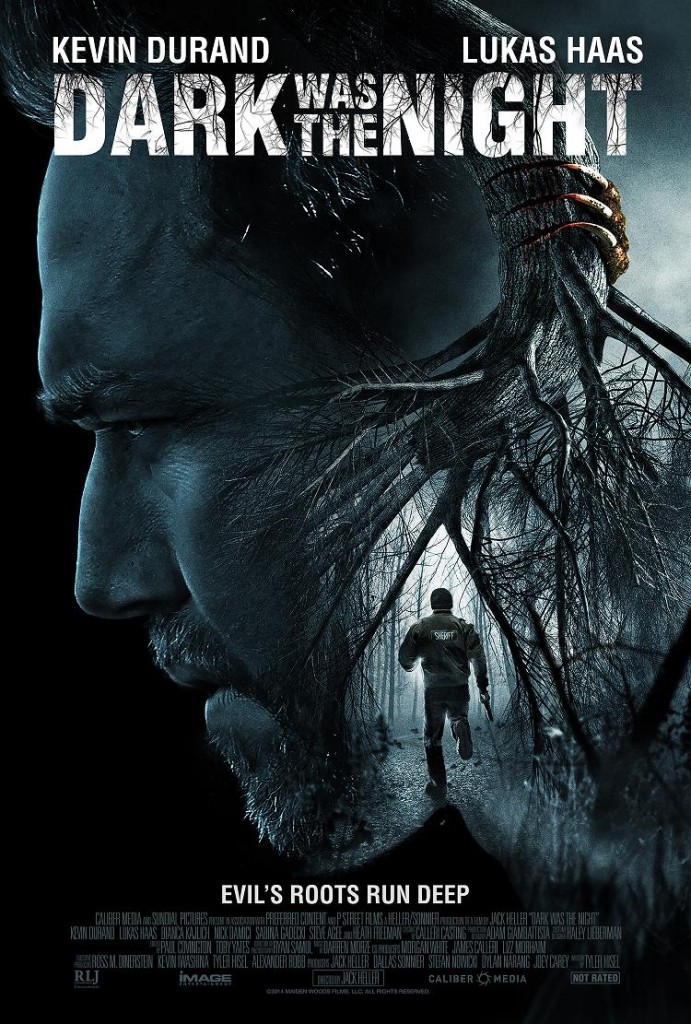
Nick Damici is in every movie that has come out in the last two years. While I know this can’t possibly be true – I have his IMDB page open in front of me – it feels like every press release in my inbox highlights the presence of Damici as either the lead or a supporting actor. This certainly isn’t a bad thing. Damici is the closest thing to 1980s Fred Ward Hollywood has had to offer since the real thing, and my own firsthand experience with his movies (STAKE LAND, COLD IN JULY) suggests that he’s a genre favorite well in the making. So with that in mind, I was more than happy to sign up for DARK WAS THE NIGHT, the most recent Damici film and a rural thriller that promises creatures in the woods and a fair amount of moodiness.

Paul Shields (Kevin Durand) is the sheriff of Maiden Woods, a fictitious town in upstate New York surrounded by unsettled woods and commercial logging camps. One night, after a heavy frost, the people of Maiden Woods wake up to discover a bizarre set of three-hooved tracks ranging from one end of the town to the other. Shields and Deputy Donny Saunders (Lukas Haas) resolve to figure out the person behind the prank, but Shields is distracted by his own personal situation: he recently lost his youngest son to a tragic accident and is struggling to maintain his relationship with his oldest boy and his estranged wife Susan (Bianca Kajlich). As Shields and Saunders look deeper into the possibility of animals or pranksters, townspeople keep reporting unexplainable events, leading the two men to believe there may be more than just animals in the surrounding woods.
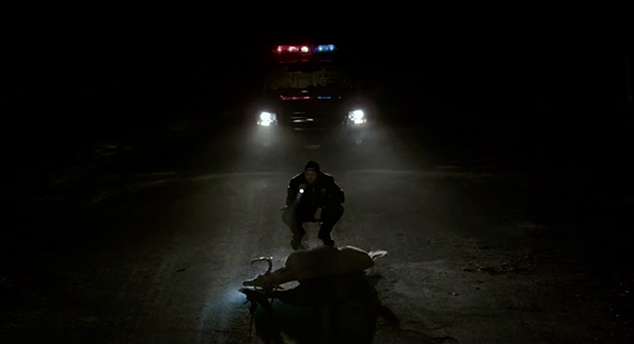
Fans of the screenwriting industry may remember that DARK WAS THE NIGHT was named to the 2009 Blacklist, the annual list of the best unproduced screenplays in Hollywood. Under its original title of THE TREES, Tyler Hisel’s script shared a list with future award contenders such as Aaron Sorkin’s THE SOCIAL NETWORK and David Seidler’s THE KING’S SPEECH before finally beginning production in 2012. Now, six years after establishing itself, three years after first saying action, DARK WAS THE NIGHT has finally found its way into a theater near you (provided you live in a fairly large market). Was it worth the wait?
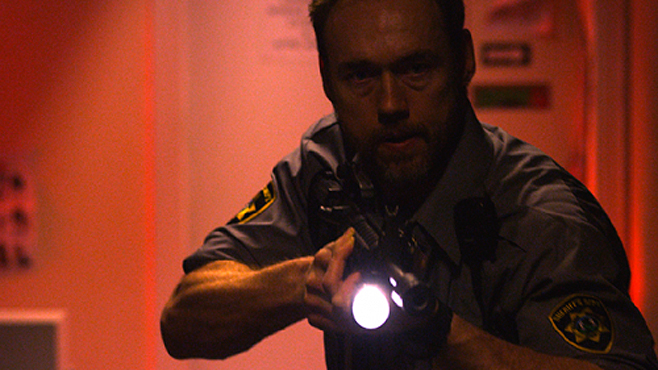
Well, yes and no. While there are pacing issues that prevent DARK WAS THE NIGHT from living up to its Blacklist promise – and we’ll get to that in a minute – the world-building at the heart of the film is solid and mostly intact. Maiden Woods, the film’s fictitious location set up in upstate New York, seems to have stepped right out of a Stephen King novel. The town stands on the border between civilization and nature; when the sheriff tracks the movement of the creature late in the film, he points out that he has reached the edge of the forest and has nowhere left to run. This also makes Maiden Woods –like the quaint New England of King’s novels – a place where whispered folklore and half-remembered myths are not as far-fetched as they may seem. People have talked about tree creatures as far back as anyone can remember.

This blurring of the real and unreal is also suggested in the film’s strong religious subtext, the payoff of which is murky at best. Throughout the film, the sheriff is reminded by other characters – his deputy, parish priest, and estranged wife – that the religious community is there for him and that he can always consider going back to church. This doesn’t make DARK WAS THE NIGHT the Christian Channel’s answer to a monster movie so much as a revisit of the themes introduced in M. Night Shyamalan’s SIGNS, another film featuring a broken household and a crisis of faith. The climax of the film even takes place in the town’s church – the only building old enough to offer a proper defense against the monster – and tries to deliver on the earlier suggestion that everything that happened to these characters was fated to help them survive this night (a suggestion that is immediately wiped out by the sequel-bait final beat).

There’s ambition here, and the attempt to do something more with the film than just recycle monster movie beats. What DARK WAS THE NIGHT doesn’t have is a strong sense of pacing. We learn in the film’s first fifteen minutes about the death of Sheriff Shields’s son, and about the monster in the woods; true, we may not know the specifics of either, but we can apply even the most rudimentary bits of horror movie logic and guess at how the film will utilize these plot points throughout. Instead of escalating or surprising the audience with these plot point, DARK WAS THE NIGHT spends most of the movie repeating them through the samegloomy blue filter. The monster is real. The monster is totally real. The sheriff couldn’t protect his loved ones. He can’t protect the town. Can he protect the town? He loves his wife. He can’t look at her anymore. Again, and again, and again.
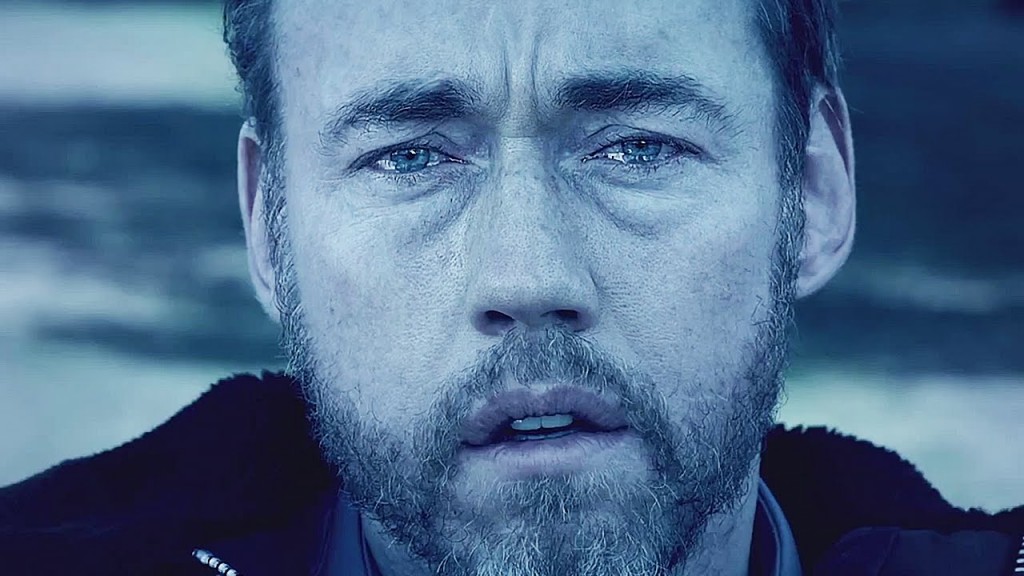
Adding to this slog are the characters’ inability to come to terms with the presence of a monster in their town. We’ve known about the monster since the film’s opening minutes – where we watched a crew of loggers get torn apart in a facsimile of an X-FILES cold open – but the sheriff and his deputy spend much of the film debating the possibility of an actual creature in the woods. Great horror films can use an audience’s omniscience against itself; in JAWS, the tension during the Fourth of July sequence comes not from the possibility of a shark attack (sharks gonna shark) but rather from the knowledge that the mayor and his men have made a terrible decision to keep the beach open. The tension between what we know and what the characters don’t know is meant to further our relationship with Brody and Hooper. We’re worried on their behalf, not our own, and the fact that the creature in DARK WAS THE NIGHT avoids outright conflict until the very end makes that tension a moot point. Shields and Saunders are never presented with clear options, nor do they face the repercussions for their hesitation.
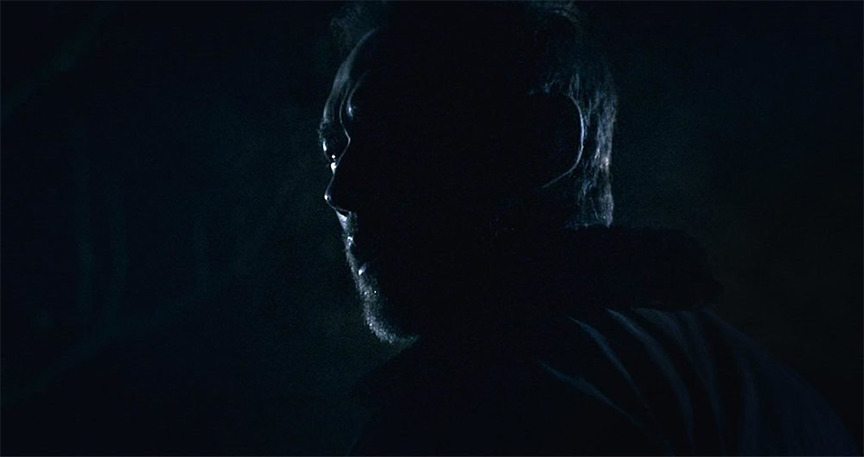
As the line blurs between television and film, it may be less damning to say that DARK WAS THE NIGHT would make an excellent network feature on the SyFy channel. There are plenty of reasons for you to try DARK WAS THE NIGHT for yourself, including its Blacklist heritage, the presence of excellent supporting Hollywood actors in lead roles, and, of course, the gruff joy that is Nick Damici, who is on screen for far too short a period of time. Just don’t be surprised when nothing happens for far too long.
— MATTHEW MONAGLE.
Tags: Bianca Kajlich, Film Reviews, Horror, Jack Heller, Kevin Durand, Lukas Haas, Monsters, Nick Damici, Ryan Samul, Tyler Hisel


We need a part 2